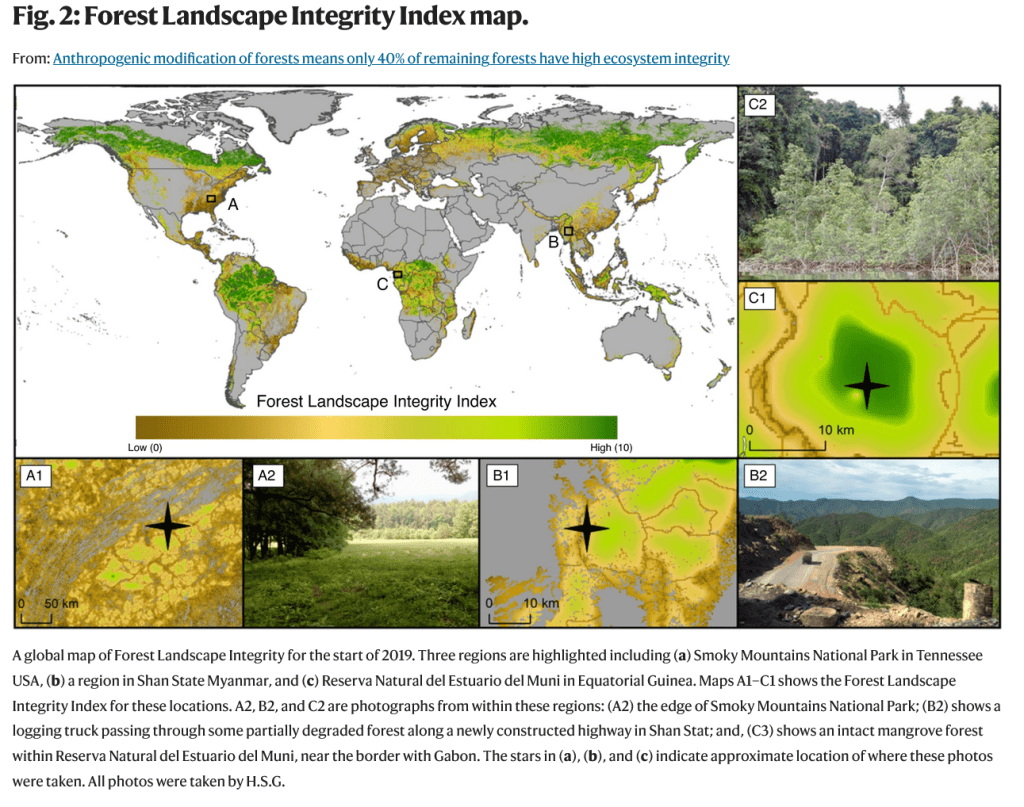‘Proforestation’ separates people from forests
AKA: Ignorance and Arrogance Still Reign Supreme at the Sierra Club.
I picked this up from Nick Smith’s Newsletter (sign up here)
Emphasis added by myself as follows:
1) Brown Text for items NOT SUPPORTED by science with long term and geographically extensive validation. 2) Bold Green Text for items SUPPORTED by science with long term and geographically extensive validation.
3) >>>Bracketed Italics for my added thoughts based on 59 years of experience and review of a vast range of literature going back to way before the internet.<<<
“Proforestation” is a relatively new term in the environmental community. The Sierra Club defines it as: “extending protections so as to allow areas of previously-logged forest to mature, removing vast amounts of atmospheric carbon and recovering their ecological and carbon storage potential.” >>>Apparently, after 130 years of existence, the Sierra Club still doesn’t know much about plant physiology, the carbon cycle or the increased risk of calamitous wild fire spread caused by the close proximity of stems and competition driven mortality in unmanged stands (i.e. the science of plant physiology regarding competition, limited resources and fire spread physics). Nor have they thought out the real risk of permanent destruction of the desired ecosystems nor the resulting impact on climate change.<<<
Not only must we preserve untouched forests, proponents argue, but we must also walk away from previously-managed forests too. People should be entirely separate from forest ecology and succession. >>>More abject ignorance and arrogant woke policy based only on vacuous wishful thinking.<<<
Except humans have managed forests for millennia. In North America, Indigenous communities managed forests and sustained its resources for at least 8,000 years prior to European settlement. It is true people have not always managed forests sustainably. Forest practices of the late 19th century are a good example. >>>Yes, and the political solution pushed on us by the Sierra Club and other faux conservationists beginning with false assumptions about the Northern Spotted Owl was to throw out the continuously improving science (i.e. Continuous Process Improvement [CPI]). The concept of using the science to create sustainable practices and laws that regulated the bad practices driven by greed and arrogance wasn’t even considered seriously. As always, the politicians listened to the well heeled squeaky voters. Now, their arrogant ignorance has given us National Ashtrays, destruction of soils, and an ever increasing probability that great acreages of forest ecosystems will be lost to the generations that follow who will also have to cope with the exacerbated climate change. So here we are, in 30+/- years the Faux Conservationists have made things worse than the greedy timber barons ever could have. And the willfully blind can’t seem to see what they have done. Talk about arrogance.<<<
Forest management provides tools to correct past mistakes and restore ecosystems. But Proforestation even seems to reject forest restoration that helps return a forest to a healthy state, including controlling invasive species, maintaining tree diversity, returning forest composition and structure to a more natural state.
Proforestation is not just a philosophical exercise. The goal is to ban active forest management on public lands. It has real policy implications for the future management (or non-management) of forests and how we deal with wildfires, climate change and other disturbances.
We’ve written before about how this concept applies to so-called “carbon reserves.” Now, powerful and well-funded anti-forestry groups are pressuring the Biden Administration to set-aside national forests and other federally-owned lands under the guise of “protecting mature and old-growth” trees.
In its recent white paper on Proforestation (read more here), the Society of American Foresters writes that “preservation can be appropriate for unique protected areas, but it has not been demonstrated as a solution for carbon storage or climate change across all forested landscapes.”
Proforestation doesn’t work when forests convert from carbon sinks into carbon sources. A United Nations report pointed out that at least 10 World Heritage sites – the places with the highest formal environmental protections on the planet – are net sources of carbon pollution. This includes the iconic Yosemite National Park.
The Intergovernmental Panel on Climate Change (IPCC) recognizes active forest management will yield the highest carbon benefits over the long term because of its ability to mitigate carbon emitting disturbance events and store carbon in harvested wood products. Beyond carbon, forest management ensures forests continue to provide assets like clean water, wildlife habitat, recreation, and economic activity.
>>>(i.e. TRUE SUSTAINABILITY)<<<
Forest management offers strategies to manage forests for carbon sequestration and long-term storage.Proforestation rejects active stewardship that can not only help cool the planet, but help meet the needs of people, wildlife and ecosystems. You can expect to see this debate intensify in 2023.

